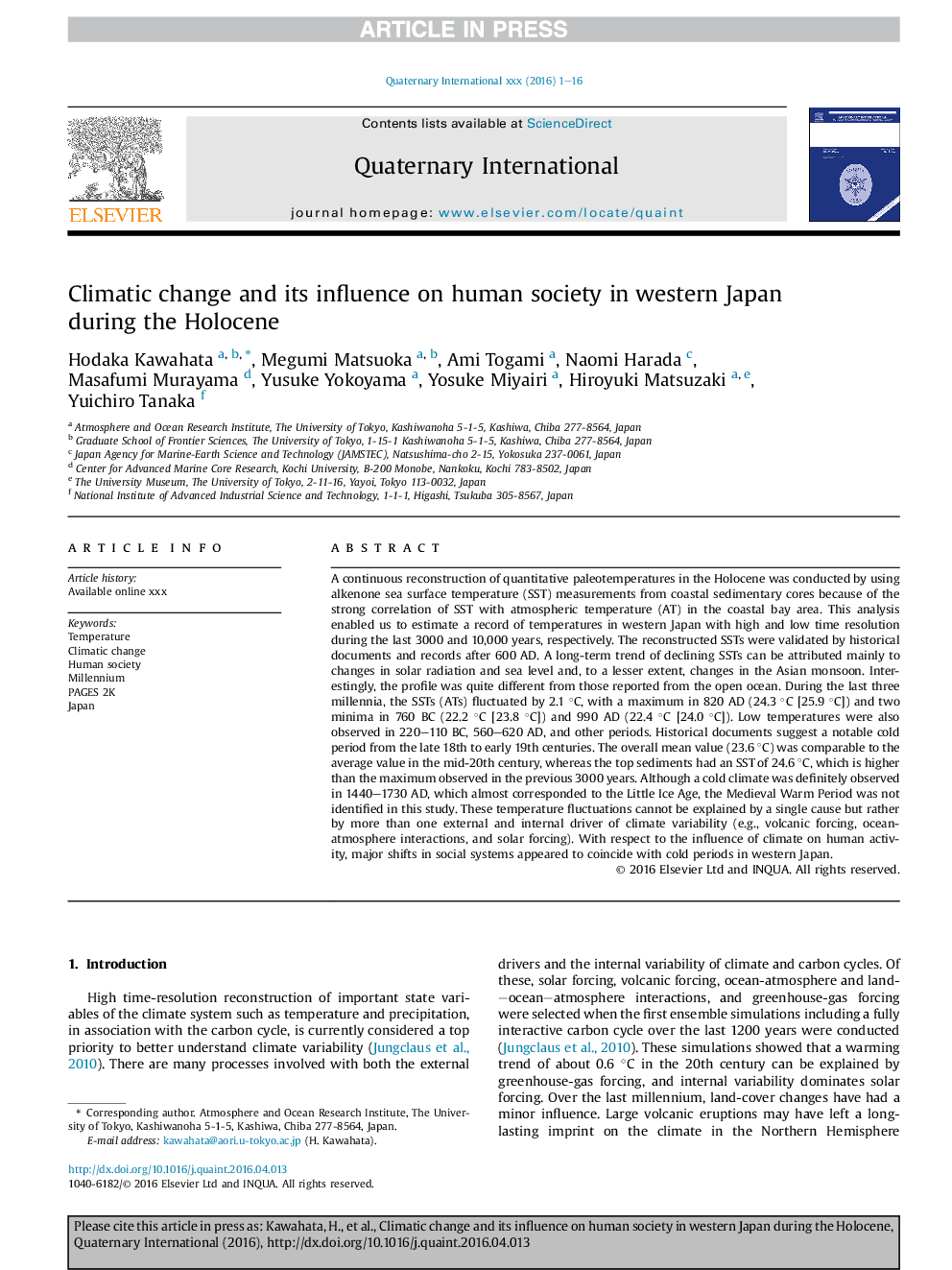| کد مقاله | کد نشریه | سال انتشار | مقاله انگلیسی | نسخه تمام متن |
|---|---|---|---|---|
| 5113314 | 1377925 | 2017 | 16 صفحه PDF | دانلود رایگان |
عنوان انگلیسی مقاله ISI
Climatic change and its influence on human society in western Japan during the Holocene
ترجمه فارسی عنوان
تغییرات آب و هوایی و تأثیر آن بر جامعه انسانی در غرب ژاپن در طی هولوسن
دانلود مقاله + سفارش ترجمه
دانلود مقاله ISI انگلیسی
رایگان برای ایرانیان
کلمات کلیدی
موضوعات مرتبط
مهندسی و علوم پایه
علوم زمین و سیارات
زمین شناسی
چکیده انگلیسی
A continuous reconstruction of quantitative paleotemperatures in the Holocene was conducted by using alkenone sea surface temperature (SST) measurements from coastal sedimentary cores because of the strong correlation of SST with atmospheric temperature (AT) in the coastal bay area. This analysis enabled us to estimate a record of temperatures in western Japan with high and low time resolution during the last 3000 and 10,000 years, respectively. The reconstructed SSTs were validated by historical documents and records after 600 AD. A long-term trend of declining SSTs can be attributed mainly to changes in solar radiation and sea level and, to a lesser extent, changes in the Asian monsoon. Interestingly, the profile was quite different from those reported from the open ocean. During the last three millennia, the SSTs (ATs) fluctuated by 2.1 °C, with a maximum in 820 AD (24.3 °C [25.9 °C]) and two minima in 760 BC (22.2 °C [23.8 °C]) and 990 AD (22.4 °C [24.0 °C]). Low temperatures were also observed in 220-110 BC, 560-620 AD, and other periods. Historical documents suggest a notable cold period from the late 18th to early 19th centuries. The overall mean value (23.6 °C) was comparable to the average value in the mid-20th century, whereas the top sediments had an SST of 24.6 °C, which is higher than the maximum observed in the previous 3000 years. Although a cold climate was definitely observed in 1440-1730 AD, which almost corresponded to the Little Ice Age, the Medieval Warm Period was not identified in this study. These temperature fluctuations cannot be explained by a single cause but rather by more than one external and internal driver of climate variability (e.g., volcanic forcing, ocean-atmosphere interactions, and solar forcing). With respect to the influence of climate on human activity, major shifts in social systems appeared to coincide with cold periods in western Japan.
ناشر
Database: Elsevier - ScienceDirect (ساینس دایرکت)
Journal: Quaternary International - Volume 440, Part A, 8 June 2017, Pages 102-117
Journal: Quaternary International - Volume 440, Part A, 8 June 2017, Pages 102-117
نویسندگان
Hodaka Kawahata, Megumi Matsuoka, Ami Togami, Naomi Harada, Masafumi Murayama, Yusuke Yokoyama, Yosuke Miyairi, Hiroyuki Matsuzaki, Yuichiro Tanaka,
